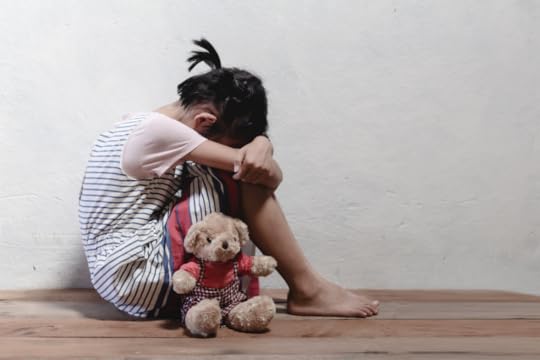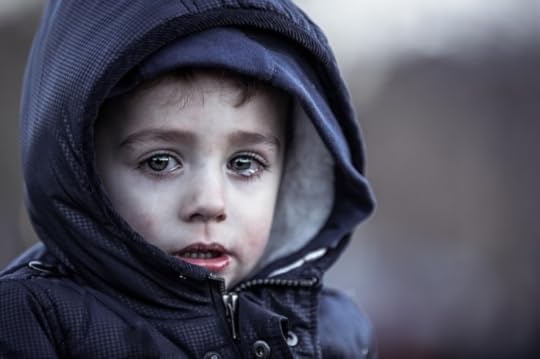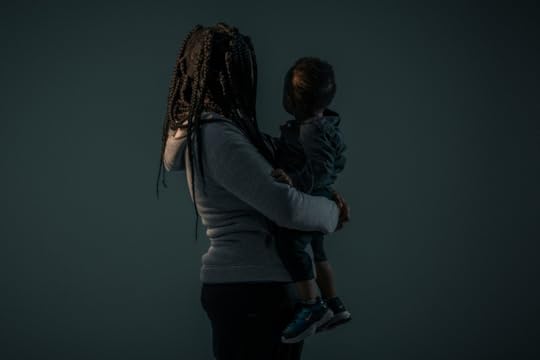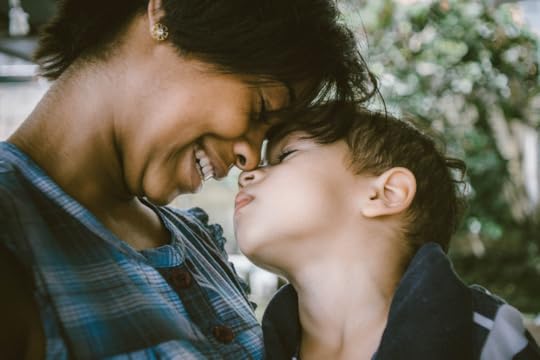Daniel Rolph's Blog
May 29, 2025
Shattered Paths – From Reluctant Writer to Best Fiction Nominee
April 1, 2025
Award-Winning Read: Shattered Paths Scores 5-Star Recognition!
March 4, 2025
Shattered Paths: The Story That’s Changing the Conversation on Foster Care
When I set out to write Shattered Paths, I knew it wouldn’t be just another book—it was a story that had to be told. It’s raw, emotional, and deeply personal. More than that, it reflects the experiences of thousands of children who navigate the foster care system, often unseen and unheard.
Since its release, Shattered Paths has done more than sell copies—it has ignited conversations about foster care, childhood trauma, and resilience. It has reached readers who have lived these experiences and others who had no idea what life in the system could be like. With a #1 ranking on Amazon in multiple categories and a near-perfect rating on Goodreads, the response has been overwhelming. But what makes Shattered Paths stand out? And how does it tie into the larger conversations happening around child welfare today?

At the heart of Shattered Paths is Jack—a boy caught in the cycle of the foster care system, struggling with instability, rejection, and the need to belong. His journey is fictional, but the emotions, challenges, and systemic issues he faces are all too real.
The statistics tell a sobering story. In the UK, over 83,000 children are currently in care, an 8% rise in five years. The U.S. reports approximately 368,000 youth in foster care, and Australia has around 45,400 children in the system. These numbers highlight the growing need for reform and better support for these vulnerable children.
Even more concerning is what happens when children age out of the system. Studies show that over 20% of foster care alumni experience homelessness within a year of leaving care. Fewer than 3% of former foster youth earn a college degree, and many struggle with financial and emotional stability. Simply removing a child from a harmful environment doesn’t guarantee them a better future—without support, they remain at risk.
What Shattered Paths does is put a face to these statistics, making them more relatable and impactful. It’s one thing to read numbers; it’s another to experience Jack’s world through his eyes, to feel the fear, loneliness, and hope that define his story.
Children in care often carry the trauma of abuse, neglect, or loss, which can have lasting psychological effects. Studies show that 45% of looked-after children in the UK have a diagnosable mental health disorder—compared to 10% of their peers. In the U.S., former foster youth suffer from PTSD at rates twice as high as war veterans. Anxiety, depression, and attachment disorders are common, often exacerbated by frequent moves and the loss of relationships.
One of the biggest issues in foster care is instability. In England, nearly 37% of sibling groups are separated, cutting off one of the most critical sources of emotional support a child can have. The longer a child remains in care, the more placements they tend to have—some move five, ten, even fifteen times before adulthood. Each move chips away at their ability to form trust and secure relationships.
Jack’s story in Shattered Paths captures these realities, showing the emotional cost of an unstable childhood and the desperate search for security and love. But it also highlights something equally important—resilience. Many children in care, despite the odds, go on to build meaningful lives. And that resilience, when nurtured with the right support, can be transformative.
Books have the power to change minds and shape policies. Throughout history, literature has exposed injustices and sparked reforms. Harriet Beecher Stowe’s Uncle Tom’s Cabin fueled the abolitionist movement, Upton Sinclair’s The Jungle led to sweeping food safety laws, and Charles Dickens’ Oliver Twist brought attention to child poverty and exploitation.
In recent years, memoirs like A Child Called “It” and Three Little Words have shed light on child abuse and foster care, influencing both public opinion and policy changes. Shattered Paths continues this tradition by using fiction to give readers an intimate, emotional connection to the realities of foster care.
For many readers, this book is their first real insight into what foster children experience. It’s breaking down misconceptions—showing that these kids aren’t “troubled” or “difficult,” but rather survivors of circumstances beyond their control.
While the issues in the system are deeply rooted, there are positive steps being taken worldwide. In the UK, the recent Independent Review of Children’s Social Care has called for a “radical reset” of the system, focusing on providing more stability and lifelong support for care-experienced individuals. The U.S. has implemented the Family First Prevention Services Act, shifting resources towards keeping families together whenever possible, and several states have extended foster care to age 21. Australia is also working to address its high rate of Indigenous children in care, focusing on keeping them connected to their communities.
These policies align with the core message of Shattered Paths: that children need love, stability, and a sense of belonging. While policy alone can’t fix everything, acknowledging the flaws in the system is a step toward meaningful change.
If Shattered Paths has taught readers anything, it’s that everyone has the power to make a difference. You don’t have to be a foster parent or a social worker to help—small actions can create ripples of change.
✔️ Support Foster Care Organisations: Groups like Barnardos, The Fostering Network, and Foster Care Angels provide essential resources for children in need.
✔️ Mentor a Young Person: Many foster youth simply need someone who believes in them. Consider mentoring or volunteering.
✔️ Advocate for Policy Change: Stay informed about child welfare policies and support reforms that prioritize stability and mental health.
✔️ Share the Story: If Shattered Paths moved you, pass it on. Awareness leads to action.
The foster care system is at a crossroads. The statistics are stark, but change is possible. Shattered Paths is not just a novel—it’s a conversation starter, a wake-up call, and a call to action.
For those who have already joined this journey, thank you. For those discovering it now—I invite you to step into Jack’s world and see why this story is resonating with so many.
Because even the most shattered paths can lead somewhere extraordinary.
➡️ Order Now: https://geni.us/OEi75Gh
January 19, 2025
The Impact of Foster Parenting on Biological Children
How Foster Parenting Affects Biological Children: What You Need to Know
Foster parenting is a deeply rewarding experience that offers stability and care to children in need. However, many prospective foster parents wonder how bringing a foster child into their home will affect their own biological children. While fostering can provide a valuable lesson in empathy and resilience, it also presents unique challenges. Understanding these effects and how to navigate them can help foster families thrive.

One of the greatest benefits of foster care is the opportunity for biological children to develop a deep sense of empathy. By witnessing the struggles of foster children, they learn the importance of kindness, patience, and understanding.
Dr. John DeGarmo, an expert in foster care and child welfare, states:“Children in foster families grow up with an enhanced sense of empathy, tolerance, and social responsibility. They learn that kindness and support can transform lives.”
Interacting with foster children who may have experienced trauma allows biological children to develop stronger emotional intelligence. They learn to navigate complex emotions and develop conflict resolution skills, making them more emotionally mature and adaptable in social settings.
Many families find that fostering strengthens their own family unit. Parents and biological children work together to support the foster child, which can bring everyone closer and create a shared sense of purpose.
Exposure to different life experiences fosters a greater appreciation for stability, family, and security. Children raised in fostering households often express gratitude for their own circumstances and become more aware of social issues.
Foster children may come from traumatic backgrounds, and their emotions can sometimes manifest in challenging behaviours. Biological children may struggle with:
Understanding why their foster sibling acts out.
Sharing attention with parents.
Adjusting to new family dynamics.
Younger biological children, in particular, may feel a sense of displacement as parents dedicate time to the foster child. Open communication and reassurance from parents can help alleviate these feelings.
Biological children may expect to form instant bonds with their foster siblings, but relationships take time. Teaching patience and resilience is essential to setting realistic expectations.
4. Temporary Nature of Foster Care
Foster care placements can be temporary, and saying goodbye to a foster sibling can be emotionally challenging. Helping biological children understand the nature of fostering and providing emotional support is key.
Dr. DeGarmo advises:“It is essential to prepare your biological children for the transitions that come with fostering. Goodbyes can be difficult, but they teach important life lessons about love and impermanence.”
Before becoming a foster family, discuss the changes and challenges that may arise. Address any fears or concerns that biological children may have and involve them in the decision-making process.
Ensure that biological children still receive dedicated attention from parents. Setting aside time for activities they enjoy can help them feel valued and secure.
Teaching boundaries and household rules that apply to both biological and foster children can create a sense of fairness and stability.
Connecting with other families who foster can help biological children feel less isolated. Support groups and social activities for fostering families provide a space to share experiences and seek advice.
Encourage biological children to express their feelings about fostering. Whether they feel excited, jealous, or confused, acknowledging their emotions helps them process their experiences in a healthy way.
Foster parenting is not just a commitment for parents—it affects the entire family. While there are challenges, the positive impact on biological children can be profound, shaping them into compassionate, socially responsible individuals.
By fostering open communication, setting realistic expectations, and providing emotional support, parents can ensure that their biological children thrive alongside their foster siblings. Ultimately, fostering is a journey that requires teamwork, love, and understanding from the whole family.
If you're considering becoming a foster parent, take time to discuss it with your family and seek support from experienced fostering networks. The experience can be life-changing for everyone involved.
8 Types of Foster Care & How to Choose the Right One
Foster care plays a crucial role in providing a safe and nurturing environment for children who cannot live with their birth families. However, many people are unaware that there are different types of foster care, each designed to meet specific needs. Whether you are considering becoming a foster carer or just want to learn more, this guide breaks down the various types of foster care, the responsibilities involved, and answers common questions.

Long-term foster care is for children who are unable to return to their birth families. Carers commit to looking after the child until they reach adulthood, providing a stable and supportive home. This type of care helps children form strong, lasting bonds with their foster family and develop emotionally in a secure environment.
✔️ Carers who can provide stability and long-term commitment. ✔️ Those who want to build a deep and lasting connection with a child.
Short-term foster care can range from one month to two years. During this period, efforts are made to reunite the child with their biological family or find a more permanent placement. Carers provide support during the transition period while professionals work towards a long-term solution.
✔️ People who may not be able to commit to long-term fostering but want to make a difference. ✔️ Those who are flexible and can support children through changes in their lives.
Emergency carers are needed when a child is removed from a dangerous or unsafe situation. These placements are often last-minute and may only last a few days or weeks while a more suitable long-term arrangement is found.
✔️ Carers who can take in children at short notice. ✔️ Those who can offer immediate safety and emotional support.
Respite care provides temporary relief to full-time foster carers. This typically lasts a few days or over a weekend, giving primary carers a break while ensuring the child continues to receive proper care and attention.
✔️ Those who want to support foster care but cannot commit full-time. ✔️ People who have other work or family commitments but still want to help.
Live-in carers reside in residential homes managed by fostering organisations. They provide day-to-day support for children with more complex needs and often work as part of a team with social workers and therapists.
✔️ People who can work full-time in a structured care environment. ✔️ Those with experience in child welfare or a related field.
Kinship care involves extended family members or close family friends stepping in as foster carers. This helps maintain the child’s family connections and cultural identity.
✔️ Relatives or family friends of a child in need of care. ✔️ Those who can maintain cultural and familial ties for the child.
In guardianship, the foster carer assumes full legal responsibility for the child until they turn 18. Unlike other types of foster care, guardianship allows carers to make decisions about the child’s schooling, healthcare, and welfare without the involvement of child protection services.
✔️ Those who are ready to take on full parental responsibilities. ✔️ Carers who want to provide a stable, long-term home for a child.
Permanent carers provide a long-term family for children who will not be reunited with their birth families. This is legally binding and gives the child full security and belonging in their new home.
✔️ Those who want to adopt but prefer a foster-to-permanent arrangement. ✔️ Carers who can provide lifelong emotional and financial stability.
Yes, having a separate bedroom ensures the child has their own space, which is important for their sense of security and independence.
Yes, you can specify the age range you feel most comfortable caring for. However, younger children, particularly babies, often require full-time caregivers.
Yes, but you will need a flexible schedule and a strong support network. Many foster carers successfully balance work with fostering, particularly in respite and short-term care.
Absolutely! Foster care agencies welcome carers from all backgrounds, including single people and LGBTIQA+ individuals. The most important factor is providing a loving, stable home.
There is no one-size-fits-all approach to foster care. Each type serves a unique purpose, and the right choice depends on your personal circumstances, availability, and willingness to support a child in need.
How to Become a Foster Carer: A Country-by-Country Guide
Becoming a foster carer is one of the most rewarding and life-changing commitments a person can make. Foster carers provide a safe, stable, and nurturing environment for children who, for various reasons, cannot live with their biological families.
While the process of becoming a foster carer differs from country to country, the core requirement remains the same: a willingness to provide love, care, and support to vulnerable children.

In this guide, we’ll explore the process of becoming a foster carer in Australia, New Zealand, the United Kingdom, the United States, Canada, and Ireland, highlighting key requirements and recent developments in each country.
Foster care in Australia has a long history, and demand for carers continues to grow. As of June 2023, there were over 46,000 children in out-of-home care, with foster carers providing vital support to many of these children.
Be at least 21 years old (varies by state/territory).
Be an Australian citizen or permanent resident.
Pass a Working with Children Check and police background check.
Complete foster care training provided by the relevant state or agency.
Have a safe and stable home environment.
Aboriginal and Torres Strait Islander children are significantly overrepresented in foster care, making up 40% of children in out-of-home care, despite being just 5.9% of the total child population.
Each state and territory has its own fostering services, so it’s best to check local government websites for specific details.
New Zealand’s foster care system has been under scrutiny in recent years due to historical failures in child welfare. In 2024, the government issued a formal apology to victims of abuse in state and faith-based care, highlighting the importance of reform and accountability.
Be at least 20 years old.
Pass a police background check.
Complete caregiver training through Oranga Tamariki (Ministry for Children).
Participate in a home study assessment.
New Zealand is making big reforms in its child welfare system, with increased focus on placing children in culturally appropriate homes, particularly for Māori children, who are disproportionately represented in care.
The UK has one of the most structured foster care systems in the world, with different types of fostering available, including short-term, long-term, emergency, and therapeutic fostering.
Be at least 21 years old.
Have a spare bedroom for the foster child.
Pass a DBS (Disclosure and Barring Service) check.
Complete training and preparation courses.
Be able to provide a stable home environment.
The UK has Family Drug and Alcohol Courts (FDACs) to help parents struggling with addiction. These courts offer support to help parents rehabilitate and reunite with their children rather than placing them in long-term foster care.
For those interested, local authorities and independent fostering agencies (IFAs) provide guidance on starting the application process.
Foster care in the U.S. operates at the state level, meaning requirements can vary widely. However, the fundamental process remains similar across all states.
Be at least 21 years old.
Pass FBI fingerprinting and background checks.
Complete a home study assessment.
Participate in pre-service training (usually 20-30 hours).
Meet the income and home safety requirements set by each state.
Approximately 6% of all children in the U.S. will experience foster care before turning 18. The U.S. also has a high number of children aging out of the system each year, leading to advocacy efforts to improve transitional programs for foster youth.
Each state has its own Department of Child Services or equivalent agency that provides detailed information on fostering requirements.
Foster care in Canada is managed at the provincial and territorial levels, leading to variations in the application process.
Be at least 18 or 19 years old, depending on the province.
Pass criminal record and child welfare checks.
Complete a home study and safety assessment.
Attend foster parent training.
Indigenous children make up over 50% of children in foster care, despite Indigenous people comprising less than 8% of Canada’s population. Reconciliation efforts are underway to ensure Indigenous children remain connected to their culture and communities.
Ireland prioritises foster care over residential care, with over 90% of children in care placed with foster families.
Be at least 25 years old.
Pass Garda (police) vetting.
Complete an extensive home study assessment.
Participate in Tusla (Child and Family Agency) foster care training.
Ireland has one of the highest rates of children in family-based foster care in Europe, demonstrating a strong national commitment to providing stable, loving environments for children.
Foster care is a vital component of child welfare systems worldwide. While each country has its own regulations and challenges, the core mission remains the same: providing safe and nurturing homes for children in need.
If you’re considering becoming a foster carer, reach out to your local child welfare agency to learn more about the application process and requirements in your country. Your decision to foster could change a child’s life forever.
For more information, visit your country’s official foster care website or speak with local fostering agencies to start your journey today.
January 5, 2025
The Profound Impact of Trauma on Children in Foster Care: A Deep Dive into the Data
Children and adolescents in foster care represent some of the most vulnerable members of our societies. Many of these children have experienced life-altering trauma, leaving lasting imprints on their physical, emotional, and cognitive development. Understanding the depth of this impact is critical for policymakers, foster carers, and advocates working to improve outcomes for these children. This article explores the nuances of trauma in foster care, backed by data from the UK, Ireland, the US, and Canada, providing a comprehensive analysis for experts in the field.
 Trauma in Foster Care: A Shared Experience
Trauma in Foster Care: A Shared ExperienceTrauma in foster care stems from varied sources, including abuse, neglect, and the disruption of familial bonds. Across regions, the statistics paint a concerning picture:
UK and Ireland: Over 80,000 children were in foster care in 2023, with 65% having experienced neglect and 20% suffering physical or sexual abuse. (NSPCC)
US and Canada: In the US, over 390,000 children are in foster care annually, with 92% having experienced at least one traumatic event. Similarly, in Canada, 76% of foster children report exposure to multiple adverse childhood experiences (ACEs). (Children’s Bureau, Canadian Child Welfare Research Portal)
Trauma often begins before foster care placements, yet the foster system itself can compound these challenges due to instability and multiple placements. Studies show that children in care experience, on average, 2-3 placements per year in both the UK and US systems.
The Psychological Toll: PTSD and BeyondChildren in foster care are disproportionately affected by psychological trauma:
In the UK, foster children are five times more likely to develop mental health disorders compared to their peers, with 45% diagnosed with PTSD.
In the US, the prevalence of PTSD among foster youth (over 60%) exceeds that of war veterans. (NCTSN)
Common symptoms include:
Re-experiencing trauma: Nightmares, flashbacks, and intrusive thoughts.
Avoidance behaviours: Withdrawal from relationships or environments associated with trauma.
Heightened arousal: Hypervigilance, difficulty sleeping, and heightened anxiety.
Expert Insight: "Trauma among foster youth is pervasive and complex. It requires a multi-faceted, systemic approach to address," says Dr. Elena Harper, a psychologist specialising in child trauma in Canada.

The effects of trauma often extend to brain development, with significant consequences for learning and cognition:
Cognitive Impairments: Studies in Canada show that foster children are 3 times more likely to have developmental delays.
Educational Gaps: In Ireland, 50% of foster children leave school without completing secondary education. In the US, only 20% of foster youth graduate from college. (Fostering Network, Child Trends)
Trauma disrupts brain regions such as the prefrontal cortex (responsible for decision-making) and the hippocampus (key to memory). As a result, many foster children face difficulties with:
Attention and focus.
Emotional regulation.
Problem-solving skills.
The Hidden Health CrisisBeyond psychological and cognitive issues, trauma leaves a mark on physical health:
In the UK, foster youth are at a 30% higher risk of chronic illnesses such as diabetes and cardiovascular diseases. (British Medical Journal)
In the US, 70% of foster children enter care with at least one untreated medical condition, and over 50% report chronic health issues as adults. (Children’s Bureau)
The stress response system, often over-activated in trauma, leads to long-term physiological damage, increasing the likelihood of conditions like obesity and autoimmune disorders.
Instability in Foster Placements: An Additional Layer of TraumaPlacement instability is a recurring issue across foster systems:
In Canada, 60% of foster children experience three or more placements during their time in care. This figure rises to 75% for teenagers. (Canadian Child Welfare Research Portal)
In the US, over 34% of foster children aged 14-18 experience more than six placements before ageing out of the system. (Casey Family Programs)
These moves exacerbate feelings of abandonment, disrupt education, and sever relationships with trusted adults.

Experts widely agree that implementing trauma-informed care within foster systems is critical. This approach focuses on:
Recognising trauma: Training foster carers and social workers to identify signs of trauma.
Building resilience: Providing safe, stable environments and access to mental health services.
Empowering children: Encouraging autonomy and decision-making to rebuild trust and confidence.
Countries like Ireland have begun adopting trauma-informed practices in their child welfare systems, with promising results. Early pilot programs show a 25% reduction in placement disruptions when trauma-informed approaches are used.
Expert Opinion: "Trauma-informed care must become the standard, not the exception," says Linda O’Shea, an Irish child welfare advocate. "It empowers carers to address the root causes of behaviour, fostering long-term healing."
The Role of Foster Parents in HealingFoster parents are often the frontline of trauma recovery. Research from the UK and US highlights the importance of:
Stability: Foster children placed in stable, long-term homes are 40% more likely to succeed academically.
Support: Foster parents who receive mental health training report fewer behavioural issues in their foster children.
Conclusion: A Call to ActionThe key to helping is patience and consistency. You can't undo years of trauma overnight," says Susan Gregory, a foster parent in Manchester, UK.
Trauma in foster care is a multifaceted issue requiring systemic change, from policy reforms to grassroots initiatives. With over 80,000 children in foster care in the UK and nearly 400,000 in the US, the need for trauma-informed care and stability cannot be overstated.
By prioritising education, mental health resources, and placement stability, we can help foster children heal and thrive.
About My Debut Book "Shattered Paths"
For a deeper exploration of these themes, my upcoming book, Shattered Paths, delves into the real-life stories of foster youth navigating trauma and resilience. Through a blend of research and narrative, it shines a light on the often-unseen journeys of healing and hope.
Stay tuned for the release in January, and join the conversation about building brighter futures for children in care.
November 10, 2024
From Darkness to Light: How Shattered Paths Aims to Inspire Hope
Writing Shattered Paths has been one of the most personal and emotional experiences of my life. I didn’t write this book just to expose the hardships faced by children in the foster care system, but to share a multi-faceted story that brings out each individual’s journey. Every child’s experience with trauma is unique, and their ways of coping, growing, or just surviving are as varied as the challenges they face.
In Shattered Paths, I wanted to capture this diversity. Not every character in the book reacts the same way to their circumstances. For some, like Jack, anger and frustration are natural responses to feeling abandoned. For Emma, who tends to conceal her pain, silence becomes both a shield and a prison. And then there’s Oliver, whose optimism might seem surprising to some, but it reflects his belief in his worth despite his painful experiences. Each of them is shaped by trauma, but how they move forward—or sometimes stay stuck—speaks to the different ways people process pain.

Many books and conversations around foster care and trauma focus solely on resilience, but in reality, not everyone’s journey is about overcoming in a straightforward way. Sometimes, survival looks like simply enduring, or using coping mechanisms that don’t necessarily heal but help keep emotions at bay. In Shattered Paths, Jack’s anger and rebellious spirit are his way of coping with a world that’s let him down repeatedly. He’s fighting to survive in the only way he knows, even if it means pushing others away.
Emma’s tendency to internalise her pain showcases another response to trauma—emotional withdrawal. Rather than acting out, she hides her wounds, feeling that vulnerability will only make things worse. This quiet endurance is a real and often overlooked response in children facing trauma. Research shows that many children who undergo severe stress or neglect adopt this inward approach, hoping to protect themselves from further hurt.
The Power of Small ConnectionsOne of the central elements in Shattered Paths is the role of connection, no matter how fleeting or fragile it may be. Trauma often isolates, creating a barrier that makes it hard for those affected to trust others or feel truly understood. I wanted to show that while connections don’t always “cure” the pain, they can provide moments of relief or support. For example, Jack might find brief solace in an unexpected friendship, while Emma experiences kindness from a stranger that reminds her she’s not invisible.
Research in the UK highlights how even the smallest acts of kindness or understanding can significantly impact a child’s self-worth and sense of belonging. In a system where many feel like they’re just another case file, these small connections can act as lifelines. I wanted readers to see how moments of understanding—even if they’re rare—can be grounding forces.

Another central theme in Shattered Paths is the idea that healing doesn’t mean “fixing.” Trauma doesn’t always come with easy answers, and for many, it’s a journey of learning to understand and accept their past rather than completely overcome it. Oliver’s story embodies this; his hopeful nature doesn’t erase his pain but allows him to find meaning within it. Healing, for him, is about accepting who he is despite what he’s been through, and finding peace on his own terms.
Healing for each of these characters—and for so many children in real life—doesn’t mean the absence of pain. It’s about living with it, sometimes finding strength in it, and understanding that scars don’t define their worth. This was an important message I wanted to communicate in the book because every person’s path through trauma is different.
A Message of Hope in All Its FormsShattered Paths is ultimately a story of varied experiences within a shared system, showing readers that while trauma may be common, responses to it are deeply individual. Not every child responds with resilience alone; some find solace in small connections, some rely on anger or silence, and others discover strength within their vulnerabilities.
My hope with Shattered Paths is to offer readers a more nuanced view of the foster care experience and to remind everyone that there’s no single “right” way to survive hardship. It’s a story that reaches out not only to those who have lived through similar experiences but also to those who may have never faced such trauma, offering them a window into lives shaped by resilience, survival, and hope in many forms.Download Chapter 1 for FREE
October 27, 2024
Exploring Childhood Trauma: The Heart of Shattered Paths
Childhood trauma is one of the most significant influences on a person’s life, shaping everything from emotional resilience to personal identity. It’s a topic often spoken of in whispers or avoided entirely due to the uncomfortable truths it reveals about society, parenting, and institutional care systems. With Shattered Paths, I wanted to give a voice to the often-silent experiences of children impacted by trauma—especially those within the foster care system.

Understanding Childhood Trauma and Its Impact
Trauma in childhood, whether from neglect, abuse, or instability, leaves a profound mark on developing minds. Studies show that children who experience trauma often struggle with trust, self-worth, and forming healthy relationships later in life. For those in foster care, these challenges can be intensified by the instability of being moved from home to home, often without the support systems other children take for granted.
The physical and emotional effects of childhood trauma are vast. Children often exhibit hypervigilance, difficulty in school, or even aggressive behavior as a way to cope with overwhelming feelings they can’t yet understand or express. In writing Shattered Paths, I wanted to capture these subtle, complex reactions that children have to trauma and, hopefully, help readers understand just how deep those wounds can go.
What Shattered Paths Will Show
In Shattered Paths, readers meet three children, each carrying their own burdens shaped by their individual experiences. This book doesn’t shy away from the reality of their lives; it’s about showing their resilience, confusion, and the search for connection in a world that feels fractured. Through their journeys, readers will see the difficult paths children walk when faced with trauma—and the small, sometimes invisible acts of strength that keep them moving forward.
As you read, you’ll encounter themes like:
The Search for Belonging: Trauma often leaves children feeling isolated, even among others. They struggle with feeling "different" or "unworthy," even though they’re just looking for the same connection and safety we all need.
Inner Strength and Resilience: The characters in Shattered Paths are constantly adapting and finding ways to survive—often in ways they don’t even realise. The book highlights how resilience doesn’t always look like bravery; sometimes, it’s just getting through the day.
Healing and Identity: Trauma can blur a person’s sense of self, especially when it occurs in childhood. In the book, the characters' paths explore how to piece together an identity when the world around them offers little stability.
In Shattered Paths, readers meet three children, each carrying their own burdens shaped by their individual experiences.
A Glimpse into Shattered Paths
If you’re interested in understanding these experiences more deeply, I’d love for you to read Chapter 1, which introduces you to the world of Shattered Paths and gives a small glimpse into the lives of these children. You can download Chapter 1 and step into a story that’s not only deeply personal to me but, I believe, relatable for anyone who’s faced struggles of their own.
Thank you for coming on this journey with me. Shattered Paths is about more than just one story—it’s about creating empathy, understanding, and hopefully, sparking conversations that lead to a better future for children facing trauma.
Let’s Keep Talking About It
There’s still so much to learn about childhood trauma and how we can help those affected by it. Whether through stories, research, or simply listening, we have the power to bring more compassion into the lives of children who need it most.



